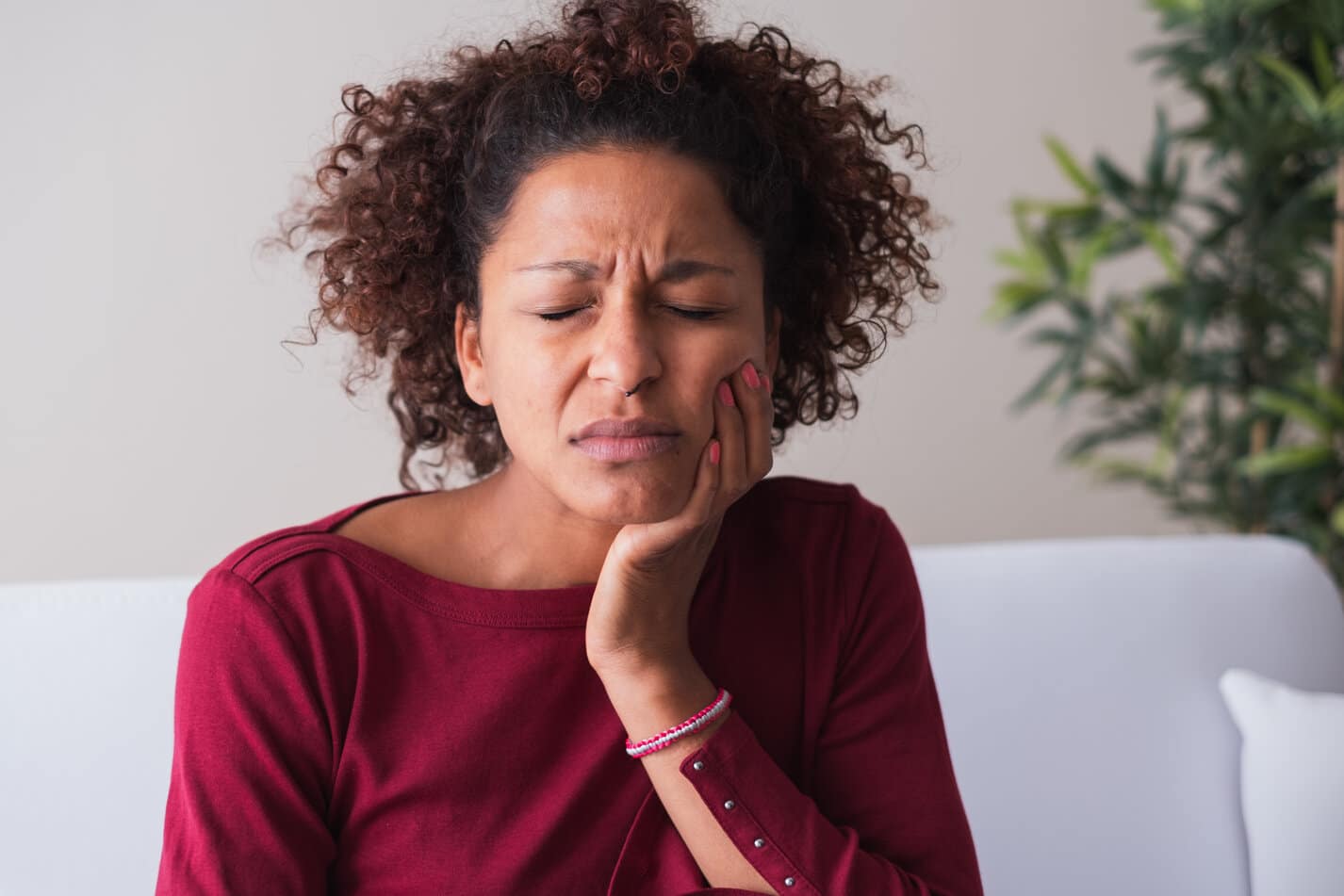The pain can be horrific. The throbbing or sharp stabbing-like pain in your ear, jaw, face, or head can be all consuming. It disrupts your sleep – and your life!
Eating may be agonizing. Even talking or smiling can exceed your pain threshold. Add in the sounds and vibrations of your jaw when you move, the snap, crackle, and pop may have you think you’re in a Rice Krispies® cereal commercial! Yet the truth is, the pain associated with a TMJ Disorder is not the time for levity. It’s a serious health concern – one that people experiencing the pain often have a difficult time finding the right health practitioner who can accurately diagnose and provide pain relief.
It is important to note that although a popping sound in your jaw may be prevalent, it is only when you experience severe pain, along with the sounds, that it is cause for concern and seeking professional help.
Experiencing constant or prolonged pain is no way to live. In fact, most who experience such pain are forced to retreat from family, friends, work, and enjoyable activities. You just want the pain to stop so you can resume your life again. But so far, you’ve found no remedy.
To alleviate your pain, you have probably sought treatment with your primary care physician. As well, you may have visited your family dentist to help resolve your severe discomfort. And whether it was your first stop, or most recent, no doubt you dove into Google, searching for answers to the cause of your pain and how to relieve it.
Could I have TMD?
Let’s first clarify the difference between TMD and TMJ. According to the National Institute of Craniofacial Research, Temporomandibular disorders (TMDs) are a group of more than 30 conditions that cause pain and disfunction in the jaw joint and muscles that control jaw movement. TMDs refers to the disorders, TMJ specifically refers to the temporomandibular joint.
There are three main classes of TMD:
- Disorders of the joints, including disc disorders
- Disorders of muscles used for chewing
- Headaches associated with TMD
Each of us have two temporomandibular joints, one on each side of our face. The joints are responsible for all movement of your jaw to open, close, eat, chew, and talk.
It can be confusing, especially through Google searches, to find clarity on the cause of your pain, as well as the treatment. So, could you have TMD? You very well may. Many medical and dental practitioners may diagnose you with TMD. However, HOW to treat TMD is where there are multiple forks in the road.
At Bay Area TMJ & Sleep Center, we believe that an experienced TMJ practitioner can diagnose the exact cause – and proper treatment – to get you pain free and back to living again!
What is TMJ Disorder?
The Cleveland Clinic describes the causes for TMJ Disorder can be a number of things, including injury to the jaw joints and surrounding tissues. Additionally, pain from TMJ Disorder can be triggered by:
- Teeth Grinding and clenching, also referred to as Bruxism
- Dislocation of the disc between the joint ball and socket
- Arthritis within the TMJ
- Stress
- Acute trauma
- An improper bit
What are TMD Symptoms?
Pain attributed to TMD can present in one or more areas of the head, face, jaw, neck, and shoulders. John Hopkins Medicine highlights the most common signs of TMD symptoms as:
- Jaw discomfort or soreness
- Headaches
- Pain spreading behind your eyes, in your face, shoulder, neck, or back
- Earaches or ringing in the ears
- Pain associated with clicking or popping of the jaw
- Locking of the jaw
- Limited mouth motions
- Clenching or grinding of teeth
- Dizziness
- Teeth sensitivity without oral health disease
- Numbness or tingling in hands or fingers
- A change in how the upper and lower jaws fit together
Who can be impacted by TMJ Disorder?
Most dentists who concentrate on the treatment of TMJ Disorders, including the practice at Bay Area TMJ & Sleep Center, find that overwhelmingly, women, more than men, experience pain and severe discomfort related to a TMJ Disorder. The reasons why more women than men can only be speculated. Yet, mostly women, ages approximately 19 – 40 seek treatment for TMJ Disorder. Of course, women and men beyond 40 can be affected, as well as those in their teens.
What’s next if diagnosed with TMJ Disorder?
When the pain won’t subside and it impacts your daily life, individuals can become desperate for answers. Yet, where do you go?
Many people who are diagnosed with a TMJ Disorder will seek treatment from any number of medical professionals. These can include primary care physicians, dentists, oral surgeons, and Ears, Nose & Throat specialists.
In addition, there are dentists who focus on the care and treatment exclusively for those impacted by TMJ Disorders. These medical professionals, such as Dr. David J. Busciglio, DABCP, help patients identify the root causes of their TMJ Disorder pain and discomfort. When professionals like Dr. Busciglio assist their patients, they can apply specific treatments to rid the pain and return to normal life.
Dr. Busciglio: A Commitment to Craniofacial Pain
A focus on helping patients with TMJ Disorders requires a commitment to continual education in this growing field. As part of Dr. Busciglio’s training in TMJ Disorders over the past 15+ years, he served in a residency program at the American Academy of Craniofacial Pain. Check out his extensive continual education here.
If you or a loved one is experiencing acute pain in the head, face, neck, jaw, or shoulder, please reach out to Bay Area TMJ & Sleep Center at 813-685-6200.
Life is too short to remain in pain. We look forward to helping you.

